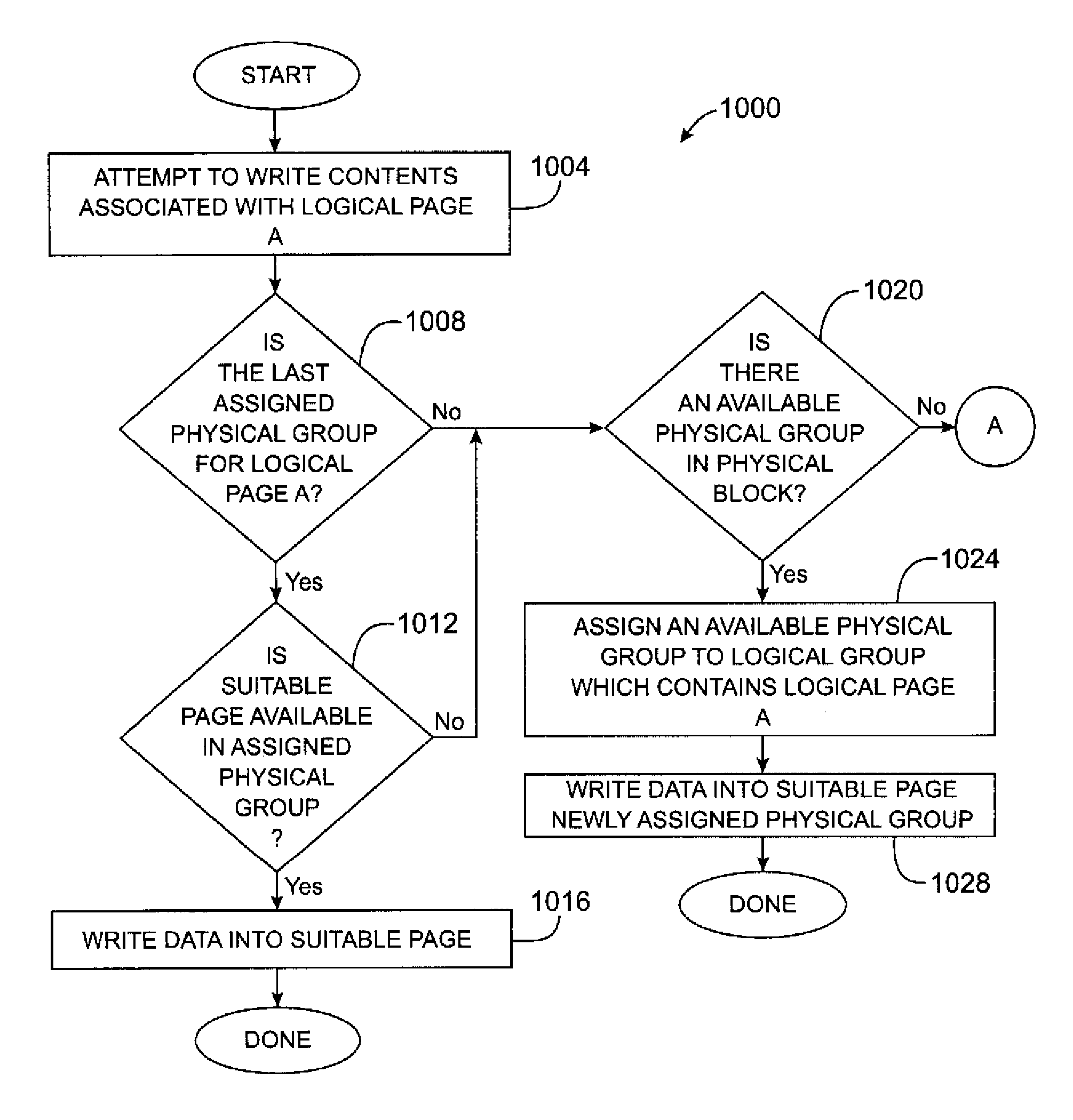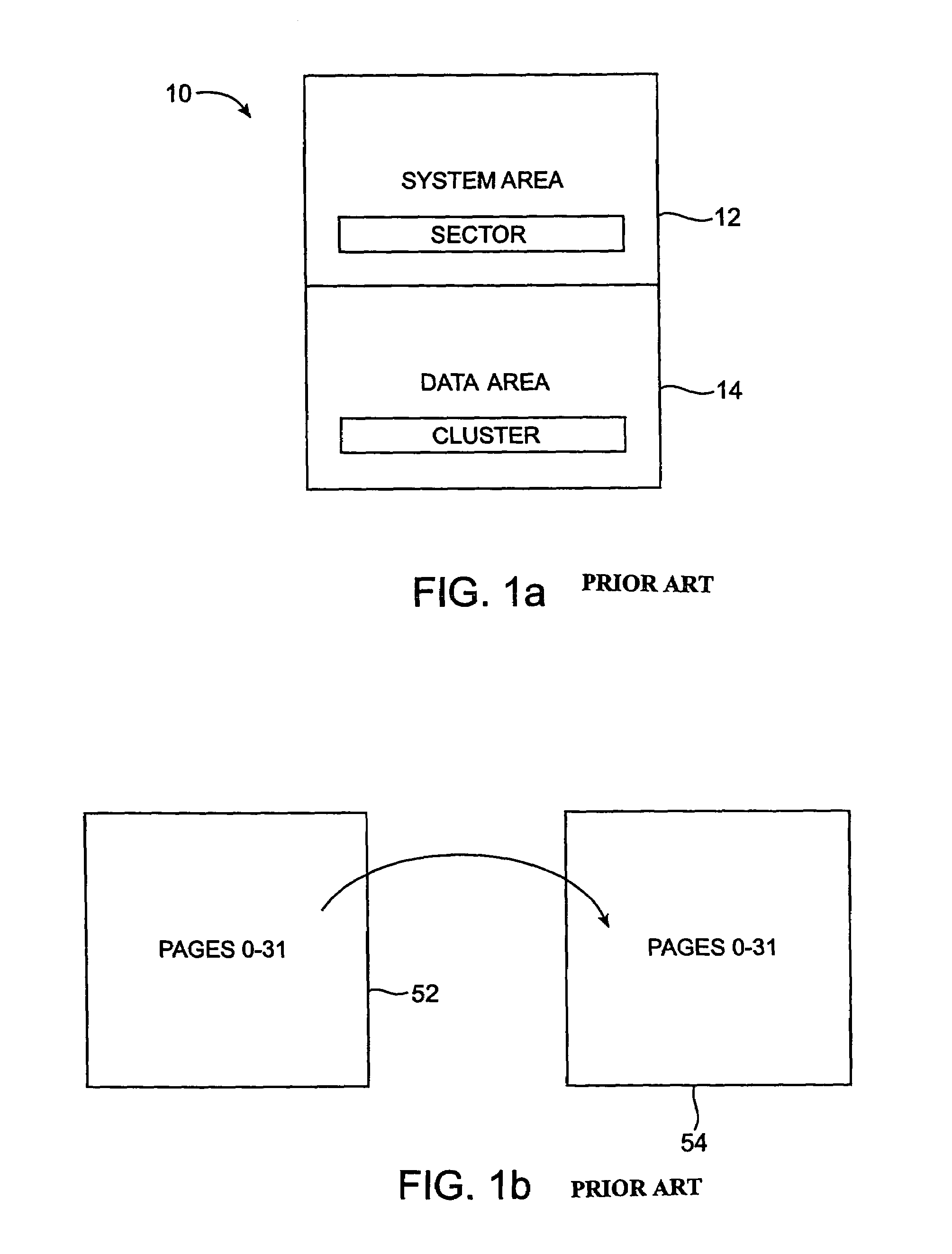Method and apparatus for grouping pages within a block
a flash memory and grouping technology, applied in the field of mass digital data storage systems, can solve the problems of consuming a large unable to allow this type of operation, and obtaining a new block consumes a significant amount of computational overhead, so as to achieve the effect of reducing the number of pages to be written, facilitating data to be written, and improving overall efficiency
- Summary
- Abstract
- Description
- Claims
- Application Information
AI Technical Summary
Benefits of technology
Problems solved by technology
Method used
Image
Examples
Embodiment Construction
[0042]Reducing the overall amount of overhead and time that is needed to store or otherwise rewrite updated pages may enable an overall system, e.g., an overall host system with an embedded non-volatile memory chip, to operate more efficiently. Obtaining a new physical block each time a page associated with the physical block is to be updated when the page has a lower page number than other recently written pages may consume a significant amount of system resources and, as a result, may be relatively inefficient. On the other hand, enabling substantially any page to be written into the next available space in a block may result in an inordinate number of read operations to be performed in order to locate a particular page.
[0043]By grouping pages within blocks such that a group within a physical block may be obtained in lieu of new physical block in order to write a page into the physical block when there is at least one available group within the physical block, the overall efficien...
PUM
 Login to View More
Login to View More Abstract
Description
Claims
Application Information
 Login to View More
Login to View More - R&D
- Intellectual Property
- Life Sciences
- Materials
- Tech Scout
- Unparalleled Data Quality
- Higher Quality Content
- 60% Fewer Hallucinations
Browse by: Latest US Patents, China's latest patents, Technical Efficacy Thesaurus, Application Domain, Technology Topic, Popular Technical Reports.
© 2025 PatSnap. All rights reserved.Legal|Privacy policy|Modern Slavery Act Transparency Statement|Sitemap|About US| Contact US: help@patsnap.com



